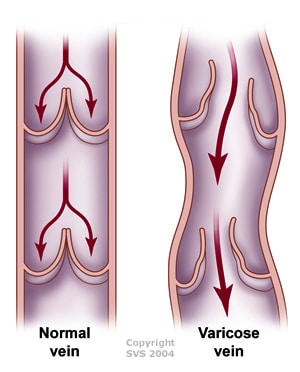This is is a method whereby an irritating solution is injected into the vein. This results in an inflammatory reaction thereby shrinking the diseased vein.
Sclerotherapy using Aethoxysklerol – Aethoxysklerol is a solution used in this practice to inject into spider veins. It has been used widely throughout the world and providing that it is used properly, it is very safe. Aethoxysklerol is fully registered in Australia.
Nevertheless, as with any other solution injected, there are possible side effects. These include the following:
- Allergic reactions including anaphylaxis.
- Pigmentation (brown staining) of the overlying skin. These pigmented areas are mainly composed of haemosiderin, an iron pigment stored in blood. In most cases, this disappears within a year. In order to minimise this side effect we advise you not to take any iron supplements before, during and for 3 months after the course of treatment.
- Ulcers. These are rare and tend to be small and heal within weeks. More rarely, these can be larger and may heal with pigmentation.
- Phlebitis. Inflammation of the veins that may present as tender red lumps along the line of the treated vein.
- Deep Venous Thrombosis (DVT) +/- Pulmonary embolus (PE). This is when a clot develops in the veins. It is a very rare occurrence particularly when sclerotherapy is accompanied by compression and regular walking. It may be an underlying sign of prothrombotic tendency.
- New Vessel formation. This is the development of fine red blood vessels near the sites of injection. It occurs especially on the thighs. It is reported to occur in approximately 10% of patients. Future sclerotherapy may not be suitable for you if this occurs.
Following the sclerotherapy, you will be required to wear your compression stocking immediately. Please remember to BRING YOUR COMPRESSION STOCKING for any consultation.
